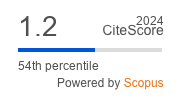Autism Spectrum Disorder: From Classical Classification to Contemporary Neurocognitive Interpretation
DOI:
https://doi.org/10.52152/x2kqw377Keywords:
Autism Spectrum Disorder (ASD) ; Classical classification ; DSM-5 / ICD-11 ; Neurocognitive models ; Brain connectivity ; Executive function ; Dimensional diagnosis ; NeurodiversityAbstract
Autism Spectrum Disorder (ASD) has historically been conceptualized through classicaldiagnostic frameworks such as the DSM and ICD, which categorize the condition based onobservable behavioral criteria, including deficits in social communication and repetitivebehaviors. While these systems have standardized diagnosis, they have been criticized for theircategorical rigidity and lack of sensitivity to the heterogeneity and complexity of autisticprofiles. Recent advances in neuroscience and cognitive psychology offer a paradigm shifttoward a more nuanced understanding of ASD. Neurocognitive models emphasize the role ofatypical brain connectivity, executive function impairments, theory of mind deficits, anddifferences in sensory integration and information processing. These insights challenge thetraditional behavioral lens and propose a dimensional and integrative approach that reflectsindividual variability.This article aims to critically compare the classical classification systems with emergingneurocognitive perspectives, highlighting their implications for diagnosis, intervention, andsocial inclusion. Through a review of recent literature and empirical evidence, it seeks to bridgethe gap between medical taxonomy and the lived experience of individuals with autism,advocating for a more comprehensive and personalized model of understanding ASD.
Downloads
Published
Issue
Section
License
Copyright (c) 2025 Lex localis - Journal of Local Self-Government

This work is licensed under a Creative Commons Attribution-NonCommercial-NoDerivatives 4.0 International License.







